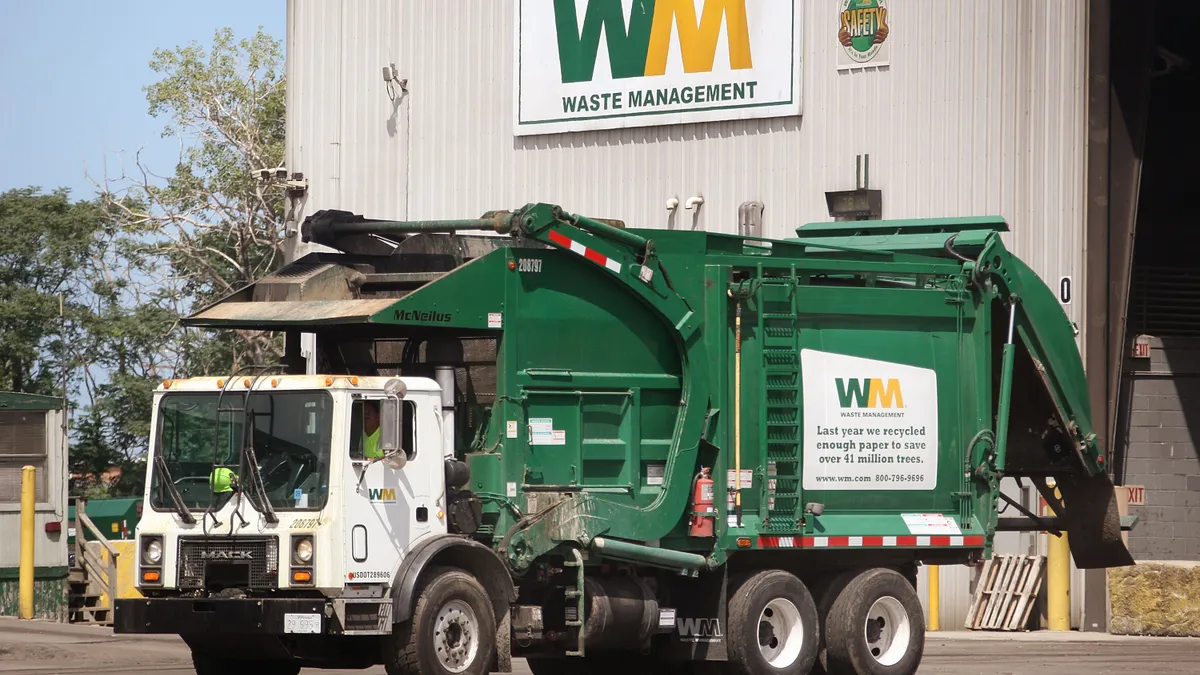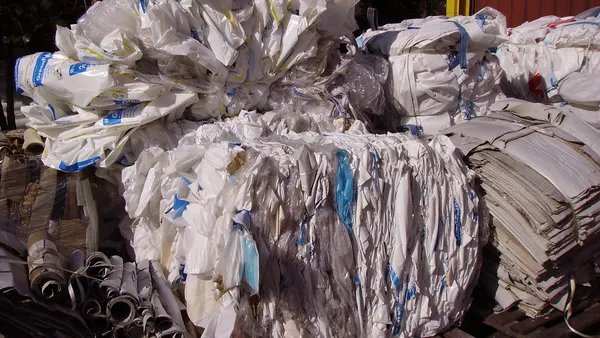As cities and companies become increasingly interested in turning organic waste into revenue, they face evolving challenges and opportunities.
Last week, stakeholders convened to discuss strategies for upscaling biogas production from organics recycling at the BioCycle REFOR19 conference in Madison, Wisconsin. Panelists were optimistic about the momentum in the sector, but also acknowledged issues that can stem from contamination, market risks and public policy barriers. Still, they outlined multiple paths forward that show how organics recovery can have economic value – even without policy drivers – in states of all types.
Midwestern case studies offer a path forward
State and municipal recycling coordinators, engineers and agency staff presented case studies and lessons from ongoing organics recycling projects in the Midwest to show what's possible.
Bryan Johnson, the recycling coordinator for Madison, described how his city made significant improvements in its second curbside organics pilot, after the first pilot ended last year due to contamination issues.
In its relaunch, the city’s recycling team emphasized communication with participating residents. Carts could only contain food scraps to minimize confusion leading to contamination, and were checked by city staff to ensure that instructions were being followed. The organizers were very pleased with the results.
“We only had three carts that we had to leave because of problems,” Johnson said.
About 1,300 cart inspections were performed during the pilot, which lasted eight weeks and involved 165 homes. Johnson noted that while he was satisfied with the outcome, checking every cart is very time intensive and would not be feasible on all routes if collection was expanded citywide.
In neighboring Minnesota, 50 cities (20% of residents) have access to curbside organics pickup, according to Tim Farnan, a principal planner at the Minnesota Pollution Control Agency. Participation rates of 45% in Minneapolis were cited as a sign of what's possible in Midwestern cities.
On the processing infrastructure side, Madison is performing a feasibility study for a digester as a potential receiving facility for collected organics. Like with the organics pilot, this is not its first attempt.
“The city has done multiple biodigester feasibility studies in the past, but what makes this one particularly different is that it’s going to be more of a regional-scale facility,” Johnson said. “Between two or three divisions, we’ve probably got about 10,000 tons.”
This city will use a $39,000 grant from the U.S. Environmental Protection Agency to evaluate whether this amount of organic waste is enough to make the digester economically viable.
During talks from Johnson and others, persistence, communication and collaboration emerged as consistent components of successful Midwestern biogas ventures.
“When we first started looking at doing the digester project, or CNG project, the gas produced at the wastewater plant wasn't sufficient,” said John Koch, water and resource recovery facility director for the city of Muscatine, Iowa. “But if you look around us … a lot of the manufacturers and food manufacturers create a lot of waste. So we decided that that was the best way to go about it — to start feeding our digester with this material.”
Koch initiated partnerships with several major regional food processors, which have indicated they will provide organic material for recycling at a new facility the city is building. The project will take advantage of existing infrastructure near a wastewater facility to minimize costs. Participants include Kraft-Heinz, Nestle-Purina, and grocery stores HyVee and West Liberty Foods.
Koch said it took three blueprint redesigns of the facility to find a model that would keep capital costs at an acceptable level while still performing the functions needed to ensure a profitable investment – a further illustration of the tenacity required by cities interested in pursuing organics recycling projects.
Now, after ongoing work, the final project design in Musctaine has been approved at $4-4.2 million.
“We think we're going to run into about a four-year payback on the project, which is really pretty good,” Koch said. Partnerships with waste generators, use of existing infrastructure, and incentives were described as the keys to making the project viable. The renewable natural gas (RNG) generated at the facility will be injected into a pipeline.
How to protect investments and grow the sector
The last important pillar of successful RNG projects that Koch mentioned — incentives — has been the most difficult one to pin down. Cities and private digester developers need to be assured they will be able to sell the gas they generate for a reasonable price, which can make or break investments.
Multiple independent markets currently exist for RNG, according to Mark Hill, vice president of business development and dairy RNG operations at DTE Biomass Energy – a major developer of dairy RNG projects in Wisconsin and the region.
These include the Renewable Fuel Standard, California Low Carbon Fuel Standard (LCFS) and the natural gas market. The former two, and the LCFS in particular, offer much more competitive prices than the natural gas market: $7 to $14 and $20 to $50 per MMBtu, respectively, vs $2 to $4 for selling RNG as “replacement” natural gas.
While great prices can sometimes be obtained for dairy biogas because it offsets a significant amount of methane emissions, which makes it extra valuable under the LCFS, major challenges for the projects are market volatility and the extensive data collection and verification required to make sure projects are eligible.
“Data collection is what I spend a good chunk of my time doing,” Hill said. “For … projects we have running right now, I have over 65 data points I have to collect every 15 minutes [in order to be LCFS-verified].”
The verification process is important for ensuring digesters are effective at offsetting greenhouse gas emissions. However, the overhead involved requires expertise that may not be as readily available at smaller operations. Dairies may also be deterred by the fact that LCFS verification takes place months after facilities are built, meaning producers do not know for sure what price they will receive until the investment has been made.
To address market volatility, multiple durability strategies for RNG projects are available, according to Paul Niznik, a senior energy consultant at Argus Consulting.
“Investors don't think about the complexities of gas or the greenhouse gas savings. They think two things: your gas might be worth nothing, and there might not be room for your product (in the market),” Niznik said. “So what are you going to do to get results? Well, there are things that we can focus on when de-risking projects.”
Niznik highlighted multiple pillars that can help immunize RNG producers from volatile prices. These include diversifying markets by selling gas in Canada, Europe, or to multiple offtakers. Producers can also adjust contracts to allow for more flexibility to avoid selling in market dips and vertically integrate to ensure a bottom price.
Next steps for Midwestern biogas projects
The conference concluded with a discussion on how biogas and other organics recycling products can become more competitive. Panelists also covered how policy innovation can incentivize organics and nutrient recycling, and expand RNG markets.
“The problem in the digester space is that digesters are operated and designed by engineers,” said Timothy Baye, a state energy specialist at the University of Wisconsin-Extension. “They're very effective. But their imagination, in terms of the value proposition that [recovered nutrients] represent, is limited.”
Baye suggested that nutrient recyclers think about their products in marketing terms, by identifying audiences interested in sustainable products and willing to pay a premium for the services they provide.
He also suggested Wisconsin reassess the potential for RNG to accomplish three objectives: creating jobs in rural areas, reducing nonpoint nutrient pollution, and pairing with renewables such as wind and solar to provide clean electricity.
Others on the panel stressed the importance of educating the public and local politicians about the environmental benefits of biogas, which is still relatively niche and often discussed by experts from a smaller number of fields.
“Go back to where you live, and let the policymakers in your area ... know what this project means to you,” said Diane Hesselbein, a state representative from Wisconsin’s 79th Assembly district. “Municipalities don’t have to wait for the state.”
Correction: This story has been updated to reflect the precise number of cart inspections and participating homes in Madison's curbside pilot.

















